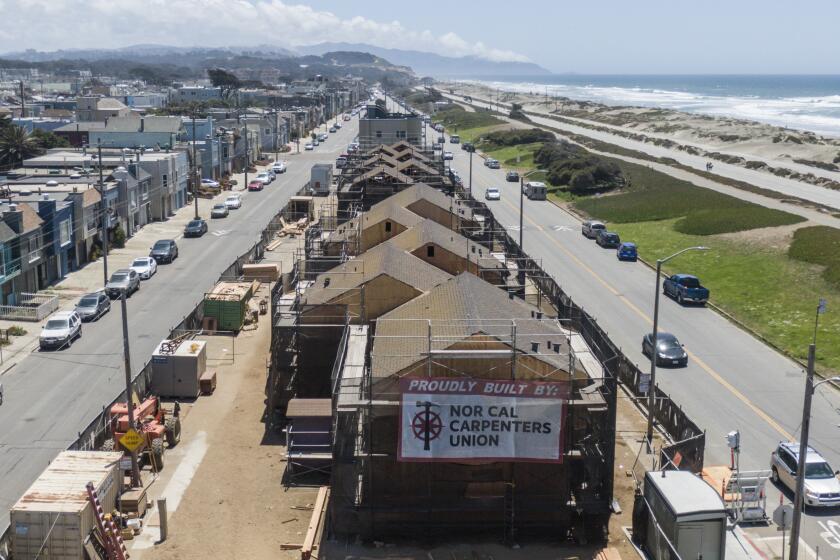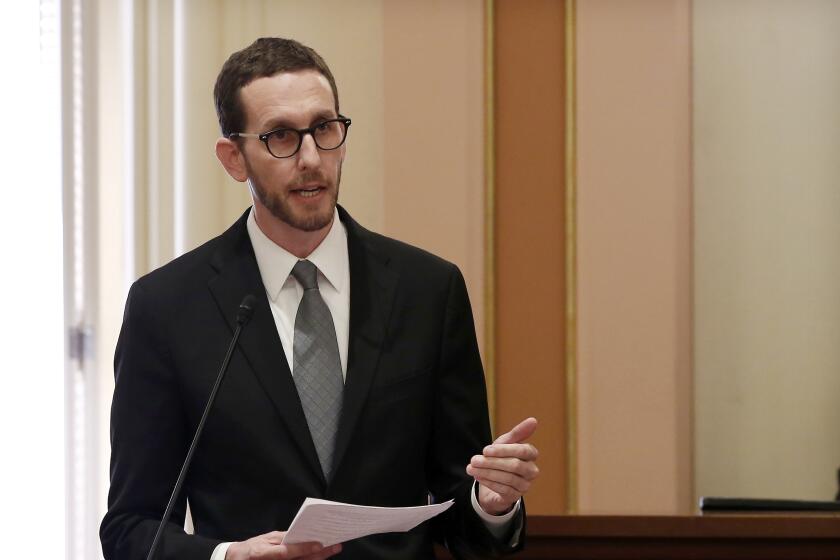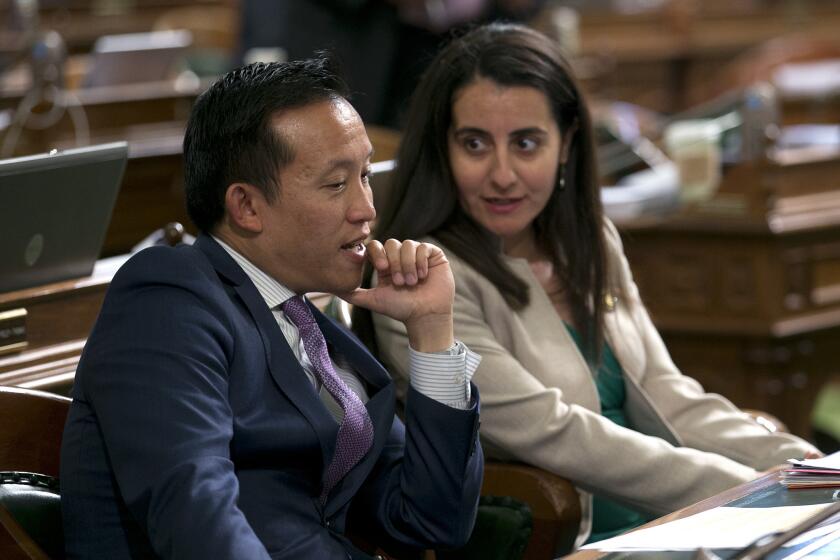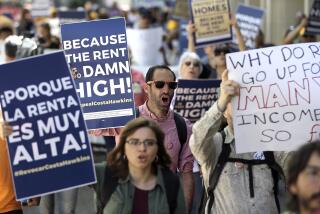What are California lawmakers doing to fix the housing crisis? A look at 2023’s new bills
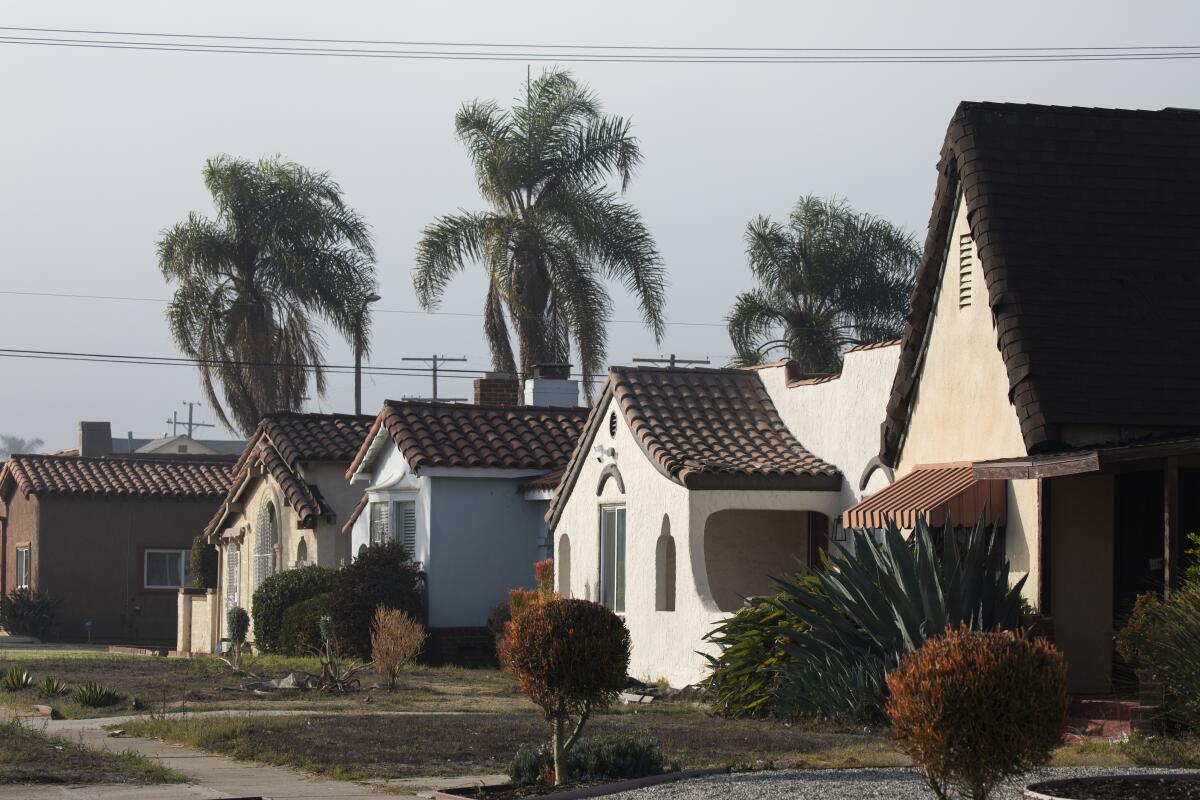
- Share via
Feeling political pressure to solve California’s severe housing shortage and ballooning homelessness, state lawmakers are pushing new bills to increase production of affordable homes and strengthen tenant protections against evictions and surging rents.
Some of the proposals include letting religious organizations quickly build affordable homes on their excess land and lowering the cap on how much landlords can raise rents each year. Others would ask voters to add housing as a human right to the state Constitution and ease barriers homeowners face when building duplexes in their single-family neighborhoods.
Those efforts would add to laws passed in recent years to streamline student housing on college campuses, funnel hundreds of millions of dollars into affordable housing and clear red tape for more accessory dwelling units, known as casitas or granny flats.
A California law passed in 2021 was supposed to make it easier for homeowners to build duplexes, but few are taking advantage of it.
And yet the majority of voters remain disillusioned with housing costs in California. Seventy-four percent of voters view housing affordability as a major issue, according to a February survey by the nonpartisan Public Policy Institute of California, and nearly 90% are worried that younger generations won’t be able to afford a home in the state.
State Sen. Scott Wiener, a San Francisco Democrat who leads the Housing Committee, said progress has been made over the last several years to address the state’s multimillion-unit shortage. But greater change will take time.
“I think we are actually starting to turn the corner,” he said. “This is a long-term process.”
Here are notable housing bills to watch this year.
Rewriting zoning rules to protect the environment
Housing advocates and environmentalists have teamed up on a new bill to overhaul California’s zoning rules to prevent so-called urban sprawl into rural regions where wildfires and floods are more common.
Assembly Bill 68, which is supported by California YIMBY and The Nature Conservancy, aims to make it easier to construct multifamily housing in developed communities that are hubs for transit and jobs.
Local governments would be able to approve projects outside of existing communities if they can show there’s no more available space or that they have to expand outward in order to meet their state-required housing goals. The overall ambition is to encourage housing where climate risks are minimal and infrastructure already exists.
Melissa Breach, chief operating officer for California YIMBY, said the housing and climate crises are “inextricably linked” and that AB 68 offers a solution to both.
“We want to encourage housing in existing communities where people really want to live,” Breach said. “And we want to protect people from the incredibly high risk of fire and flood, and all the other climate risks associated with that.”
But developers argue the proposal doesn’t acknowledge how impossible and costly it would be to limit new construction to urban centers.
Dan Dunmoyer, president and CEO of the California Building Industry Assn., called AB 68 “the farthest-away solution to the housing crisis that can possibly be suggested.”
Urban areas flood, too, Dunmoyer said, and many of California’s cities, such as San Francisco and Los Angeles, are at high risk of earthquakes. And when you reduce the amount of land that’s available for housing, the remaining parcels will increase in price. That could mean new homes would be affordable only to wealthy people.
“This is the ultimate housing killer,” Dunmoyer said.
The California Chamber of Commerce agrees. It has recently added AB 68 to its annual “job killer” list, a designation that indicates the group will lobby hard to kill the bill.
Another fight over labor standards
Wiener introduced two bills this year that he hopes will build on a rare deal Democrats struck with labor unions in August with legislation to convert underused commercial space into new units.
Senate Bill 4 would allow allow nonprofit colleges and faith organizations such as churches, mosques and synagogues to quickly build affordable homes on their land, while Senate Bill 423 would make permanent a 2017 law that lets developers streamline their projects in cities that have failed to meet state-mandated housing goals.
Both bills include a guarantee of union-level pay, known as prevailing wages, and some healthcare benefits for construction workers. Those labor standards were included in last year’s agreement and are supported by the California Conference of Carpenters .
California lawmakers struck a seemingly impossible deal to build more housing in areas traditionally zoned for big box stores and office buildings.
The carpenters have split from other labor groups in backing the bills, including the influential State Building and Construction Trades Council, which has long advocated for the more rigorous requirement of a “skilled and trained workforce.” That standard guarantees that a portion of workers have gone through an apprenticeship program and most are unionized.
The elevated requirement protects workers against exploitation and wage theft and opens up opportunities for women and other marginalized groups to join the industry, said Sabrina Hernandez, who represents an electricians union that’s part of the Trades Council.
“Skilled and trained provides safety and security for those individuals who may be vulnerable,” Hernandez said in an interview after testifying against SB 423 at a recent hearing.
Wiener said he’s hopeful the two sides can find a solution that works for everyone. He’s supported by Assemblymember Buffy Wicks (D-Oakland), who helped broker last year’s deal and is chair of the Assembly Housing and Community Development Committee.
Wicks said it’s time to find new ways to build housing and abandon the “status quo.”
“We’re done with that,” she said during a recent housing conference. “We’re trying to find the coalition of the willing who is going to say it’s time to get on this train and build the housing that we need.”
Senate Bill 4 would let religious groups and nonprofit colleges build homes on excess land, but lawmakers will need to make a deal with unions on the proposal.
Increasing tenant protections
Current law allows landlords to raise rents by 5% plus inflation each year, or a maximum of 10%, and to pursue certain evictions outside of standard violations of a lease. That includes when landlords or their family members want to move into the home or if they have plans to renovate the property or take it off the rental market.
Sen. María Elena Durazo (D-Los Angeles) introduced Senate Bill 567 to further crack down on what she said are outrageous rent increases and unfair evictions that have worsened homelessness.
“The rent increases are out of control,” Durazo said.
Durazo’s bill would cap the increase to inflation, not to exceed 5% annually, and expand protections to renters in single-family homes, condos and mobile homes, according to a summary sheet provided by Durazo’s office.
It would also establish accountability measures to ensure landlords or family members move into the homes and stay there for a period of time, and prohibit permanent evictions after renovations. Instead, tenants would be allowed to move back in after the rehabilitation is finished.
The effort has reignited opposition from organizations representing landlords that fought against the 2019 law that established the current rent cap and eviction standards.
“We came to the table and we struck a balance. That was historic,” said Debra Carlton, executive vice president of state public affairs for the California Apartment Assn.
Gov. Gavin Newsom is expected to sign a statewide cap on annual rent increases of 5% plus inflation.
Carlton said more time is needed to evaluate whether the law is working before it’s expanded, especially because the COVID-19 pandemic provided renters with strong eviction protections through local states of emergency.
The association is also opposed to Assembly Bill 12, which would limit security deposits to one month’s rent, which advocates supporting the bill said would prevent renters from falling into debt just to make that payment.
Another proposal, Assembly Bill 919, would give tenants, local public agencies and nonprofits the first opportunity to buy a rental property or match an offer when an owner puts it on the market.
Adding social housing options
Assemblymember Alex Lee (D-San Jose) introduced Assembly Bill 309 to increase social housing options in California. Two previous social housing bills by Lee have failed to pass the Legislature.
There are many social housing models, but the general idea is that it’s government funded and occupied by residents of all income levels. It’s typically more affordable for low-income people, and tenants are granted a greater say over how the building functions and is managed.
Lawmakers took a trip to Vienna in the fall to learn how about the widespread use of social housing in that city, and have pointed to projects in Singapore as a model for what could be done in California.
They could also look down the street from the Capitol for inspiration.
The Capitol Area Development Authority is a public agency that manages more than 700 rental units, according to its website. Though it’s not exactly social housing, its residents have mixed incomes, and around 25% of the units are affordable for lower-income tenants.
More to Read
Sign up for Essential California
The most important California stories and recommendations in your inbox every morning.
You may occasionally receive promotional content from the Los Angeles Times.

